
South Kashmir based trout farm is becoming one of the major revenue projects for addressing the growing fish appetite and making the valley self-sufficient.
EVEN as Kashmir has lost some of its famed freshwater fish to the growing water pollution and policy paralysis, the demand for Rainbow trout is increasing.
And meeting this growing appetite is Asia’s largest trout fish farm in Kashmir.
In the scenic south Kashmir town of Kokernag, the farm is becoming a delicious treat for fish aficionados of Kashmir.
“Thanks to the fast growth rate and commercial value, Rainbow trout is exclusively cultured at the farm,” says Mohammad Muzaffar Bazaz.
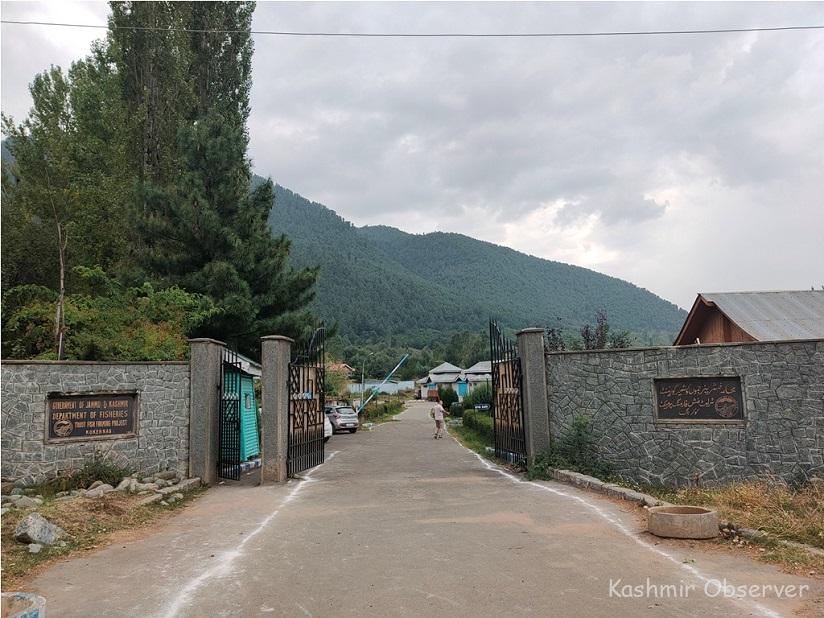
Bazaz, who’s a Chief Project Officer, Trout Farming, Kokernag, says his team also cultures low-valued brown trout to help anglers for getting a good bag limit — a law imposed on fishermen restricting the number of fish they can keep.
A bag limit of six fish is allowed for anglers from sunrise to sunset.
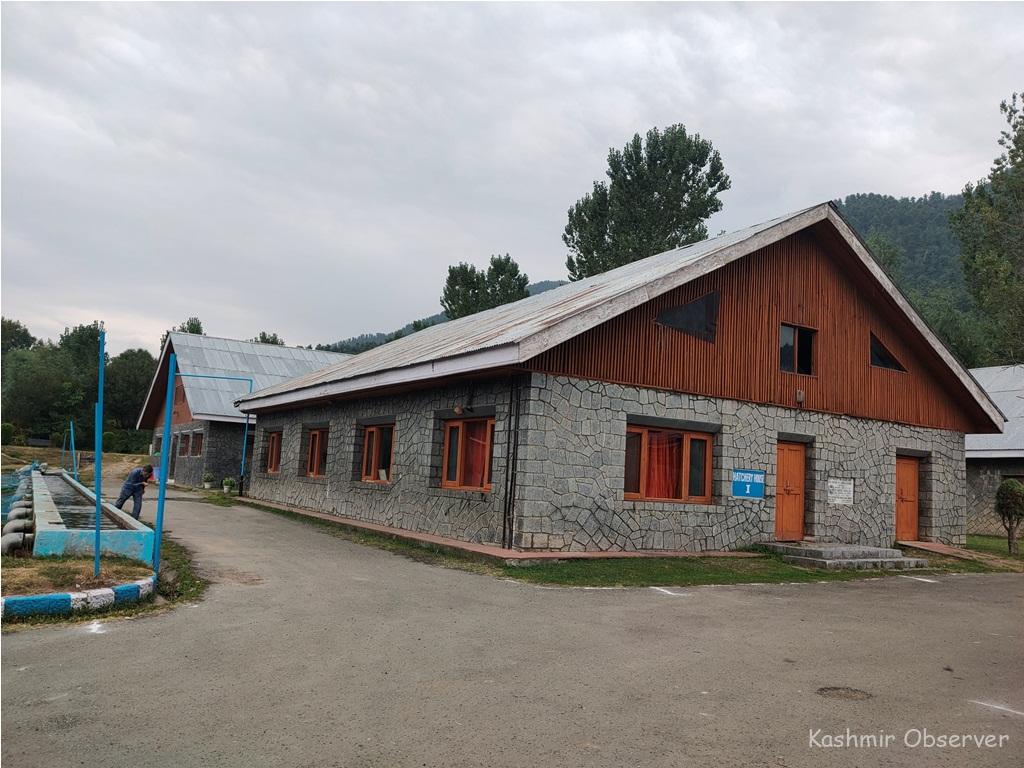
The farm is at a walking distance from the famed Kokernag garden. Bazaz terms it “Asia’s largest Trout Farming Project and Brooder producing centre”.
The project was established with the assistance of European Economic Community in the year 1984.
Since then the farm has been producing its own seed and brood fish —a group of matured fish used in aquaculture for breeding purposes.
From a single hatchery in 1984, the 20-hectare farm today has come to house three hatcheries.
The farm is associated with elite units like Trout Culture Farm Achabal and Trout Rearing Unit Verinag.
From April 2020 to March 2021, these three trout farms collectively generated revenue of Rs. 2.05 crores.
“Currently,” Bazaz says, “Kokernag farm has a stock of around Rs. 15 lakh fish.”

Kashmir provides ample opportunities for the development of fisheries due to its ideal conditions for the species like Schizothorax, Oreinus, Glyptothorax, trout, etc.
It was Johann Jakob Heckel, an Australian zoologist, who first found out that no fish of Indian plains could reach the valley since they have to cross through 30-miles of rapids and rocky gorges. He thus concluded that the fish in the valley is completely different from the rest of India.
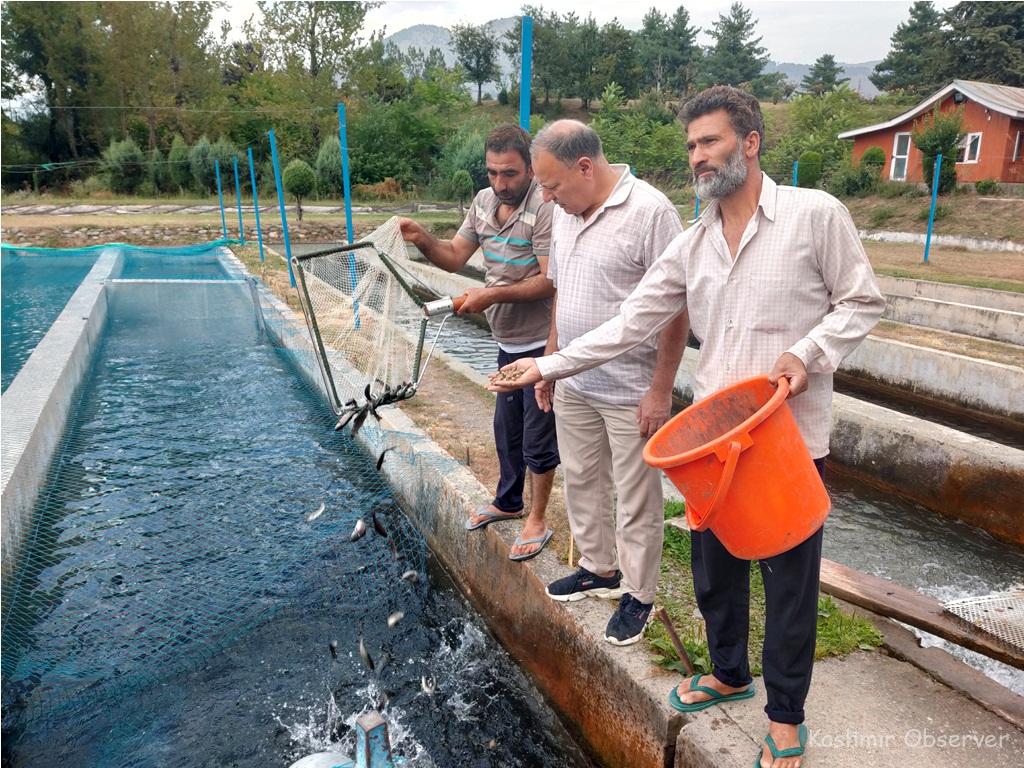
The endemic fish have elongated and sub-cylindrical fleshy bodies and are known to be tastier and free of diseases. A pollution-free water body is characterized by the presence of snow-trouts.
Schizothoracine fish or snow-trouts locally known as Alegad inhabit both lentic (standing) and lotic (flowing) water bodies of Kashmir.
But from 16 species once, the freshwater trout has now reduced to five, including Schizothorax esocinus (Chirru), Schizothorax curvifrons (Satter gad), Schizothorax niger, Schizothorax plageostomus and Schizothorax labiatus.
Experts blame several man-made factors for the deterioration of the endemic species.

At Kokernag, Bazaz who happens to be the first fisheries postgraduate (MFSC) of Jammu and Kashmir from College of Fisheries Mangalore, explains how trout fish needs a temperature of 0-20 degrees and highly oxygenated, clean and cold water.
“Since we’ve brown trout (Salmo trutta) here, it was first brought from Scotland by Frank Mitchell, a carpet dealer in the year 1899,” Bazaz says. “The first consignment did not survive and perished on the way due to high temperature.”
Later in 1912, Rainbow trout or Oncorhynchus mykiss was first brought to Kashmir from England.
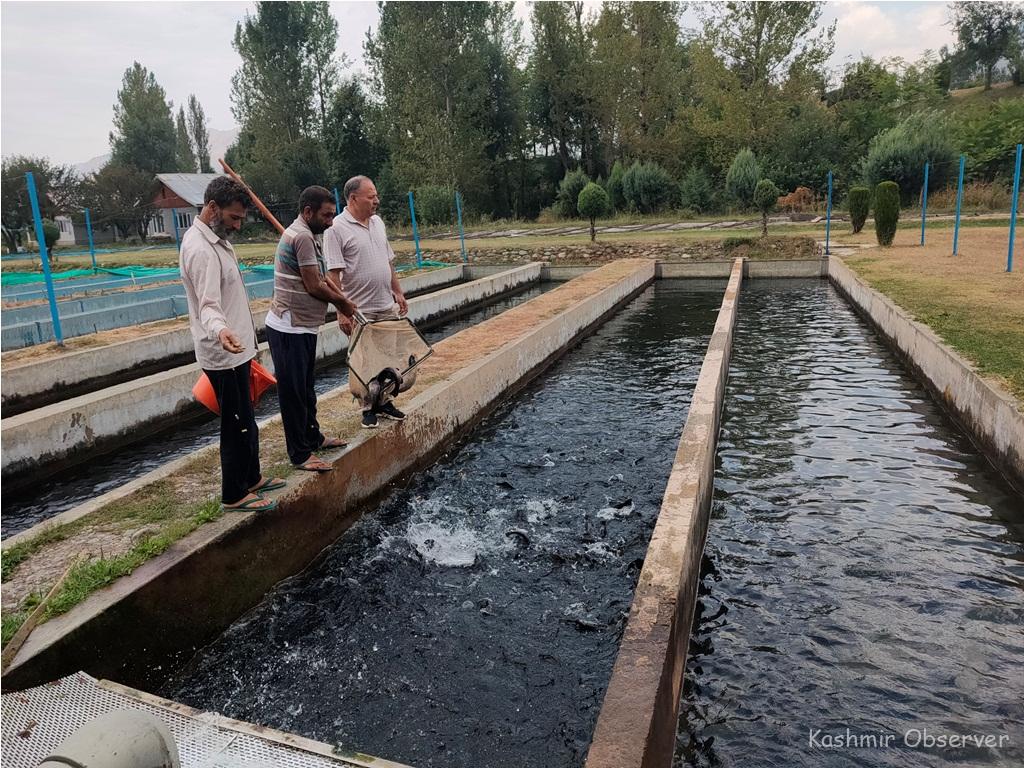
The commercial culturing of trout fish gained momentum after an internal study by Wildlife Institute of India revealed that climate change will affect around 150 native fish species of the Himalayan states, including Uttarakhand, Himachal Pradesh, Jammu & Kashmir and Arunachal Pradesh.
“Common snow trout, found in the Himalayan region and much sought after as a food fish, alone would lose around 21% of its existing space of 16,251 square kilometers,” the study notes.

However, experts say, the introduction of exotic species having prolific breeding in the valley has resulted in a sharp decline of the native species.
Some of these commercially viable and high-growth species, like carp, were first introduced in Kashmir in 1959.
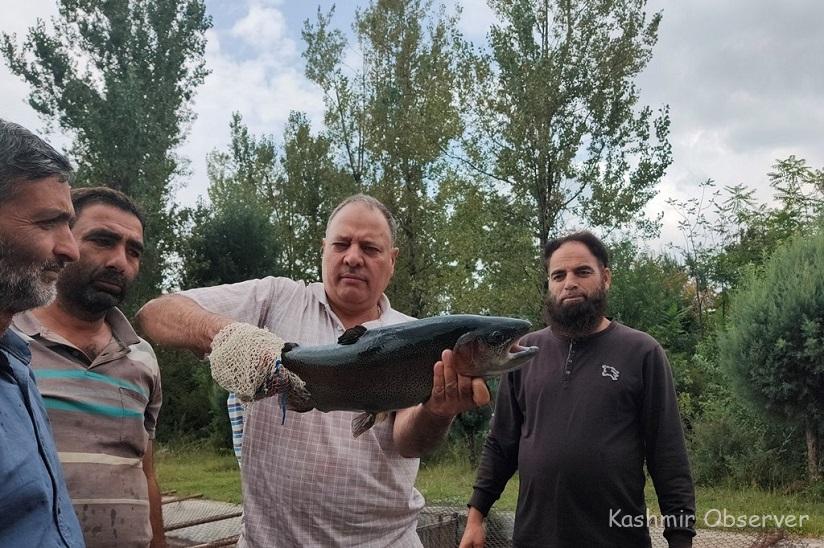
To exploit the vast potential of trout, Bazaz says, Kokernag farm diverted to private sector in 2009.
Twelve years down the line, there’re hundreds of private farms culturing trout fish in Kashmir.
“We’re self-sufficient in trout production now,” Bazaz smiles. “And that truly makes the entire project a rainbow delicacy!”
Follow this link to join our WhatsApp group: Join Now
Be Part of Quality Journalism |
Quality journalism takes a lot of time, money and hard work to produce and despite all the hardships we still do it. Our reporters and editors are working overtime in Kashmir and beyond to cover what you care about, break big stories, and expose injustices that can change lives. Today more people are reading Kashmir Observer than ever, but only a handful are paying while advertising revenues are falling fast. |
| ACT NOW |
| MONTHLY | Rs 100 | |
| YEARLY | Rs 1000 | |
| LIFETIME | Rs 10000 | |












